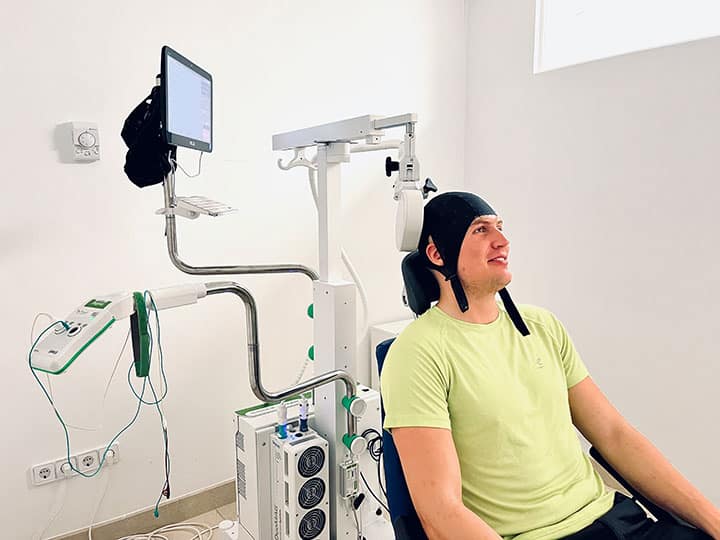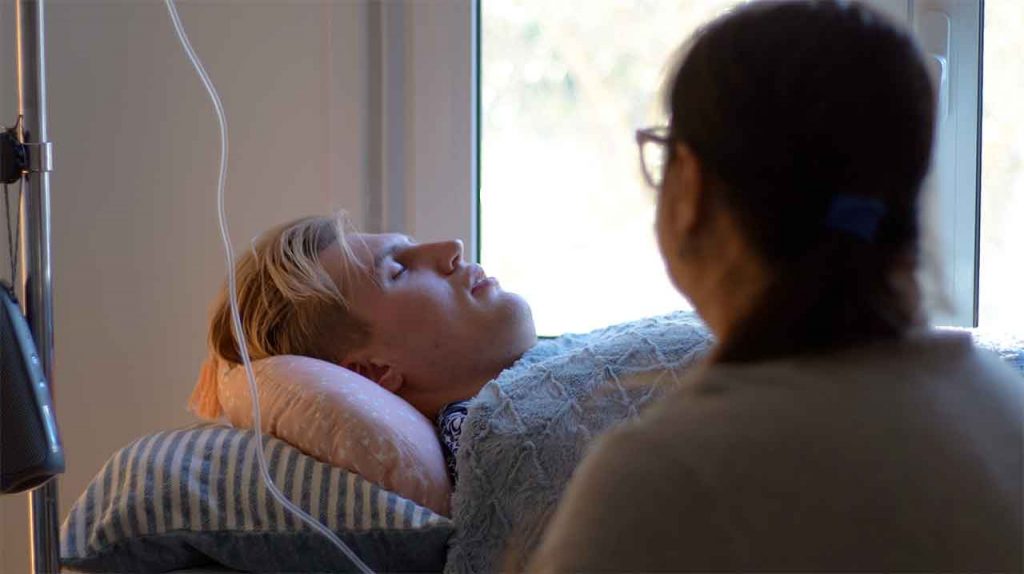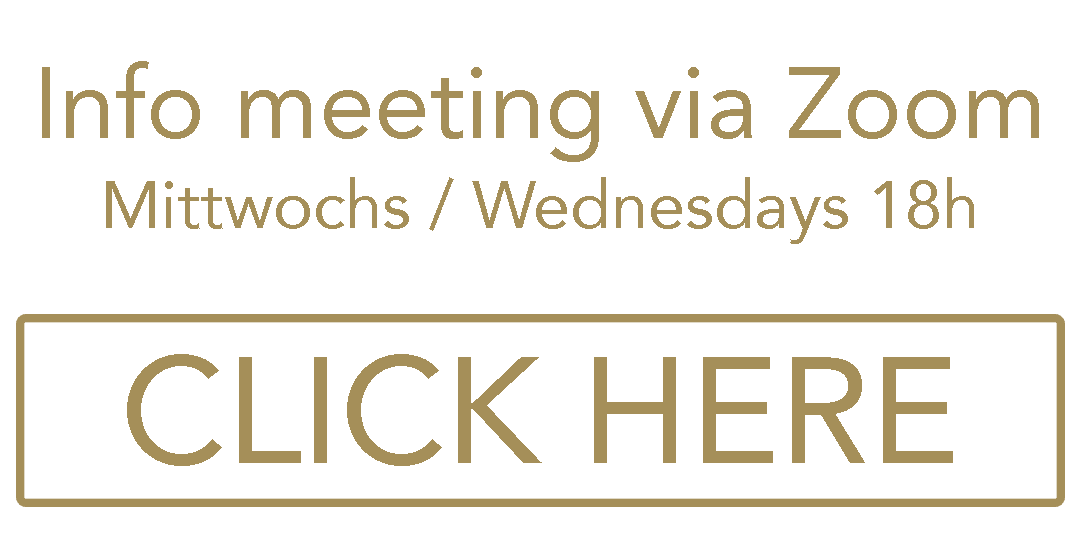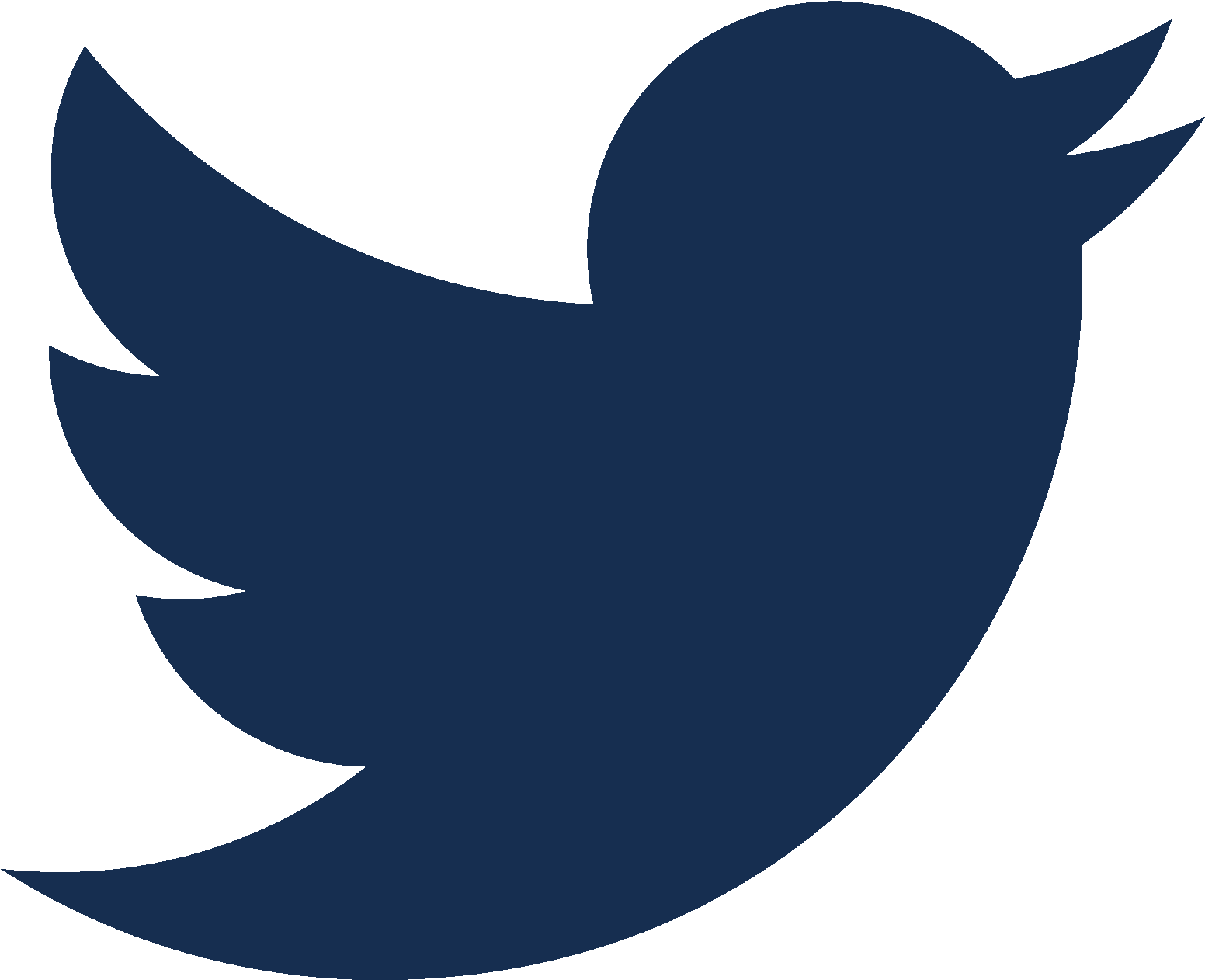What is rTMS?
Repetitive transcranial magnetic stimulation (rTMS) is an innovative and promising treatment method for depression. The method is safe, effective, and can significantly improve the quality of life of those affected. In Germany, around 5 million people suffer from depression. According to the Robert Koch Institute, depression is the most common mental illness. rTMS offers a promising alternative for patients who do not respond to other therapies. Studies show that around 50-60% of those treated experience a significant improvement in symptoms.
rTMS, or repetitive transcranial magnetic stimulation, has proven particularly effective in the treatment of depression and addiction, but is also effective in the treatment of tinnitus, burnout, anxiety, obsessive-compulsive disorder and sometimes Alzheimer’s dementia.
rTMS is a non-invasive method, i.e., no surgical intervention is required. The treatment can be performed on an outpatient basis and usually does not cause any significant side effects. Repetitive transcranial magnetic stimulation can also be used in pregnant women.
In rTMS, short, painless pulses are transmitted to specific areas of the brain using a magnetic coil. Repetitive transcranial magnetic stimulation (rTMS) treatment stimulates parts of the brain using a strong, pulsating magnetic field. This improves blood flow to certain parts of the brain and, depending on the frequency, stimulates or dampens the electrical activity of the cells. This stimulation promotes neural communication and can thus contribute to an improvement in mood, listlessness, and sleep disorders. The duration of treatment varies from person to person, but 20 to 30 stimulations should be carried out to achieve lasting effects.
Repetitive transcranial magnetic stimulation (rTMS) is non-invasive and can also be used on pregnant women.
Repetitive transcranial magnetic stimulation (rTMS) was approved by the US Food and Drug Administration (FDA) in 2008 for the treatment of treatment-resistant depression and in 2018 for obsessive-compulsive disorder. The German scientific guidelines for the treatment of depression (S3 guidelines) also recommend rTMS as a possible treatment for depression. There are now comprehensive studies that prove the efficacy and safety of the procedure.
How exactly does repetitive transcranial magnetic stimulation work?
1. The magnetic coil:
rTMS uses a coil-shaped device that is positioned over the patient’s head. An electric current flows through the coil, creating a strong, pulsating magnetic field. This sometimes causes slight muscle twitching and a temporary mild headache. Overall, however, rTMS is very well tolerated. To find the ideal stimulation site in the brain, we work with an innovative system that measures the influence of the magnetic pulses on the heart’s activity (HRV extension). This allows the magnetic coil to be positioned optimally.

2. Stimulation of the brain:
This magnetic field penetrates the skull and the meninges and stimulates the nerve cells underneath. The stimulation can have different effects depending on the frequency of the magnetic pulses:
- Low frequencies (1-5 Hz): inhibit the activity of the nerve cells and can thus contribute to calming and relaxation.
- High frequencies (5-20 Hz): excite the nerve cells and can thus improve mood, drive, and concentration.
3. Influence on neural networks:
rTMS can improve neural communication and the synchronization of nerve cells in certain areas of the brain. These changes can contribute to long-term relief of depressive symptoms.
4. Treatment procedure:
rTMS treatment is usually performed on an outpatient basis and lasts about 20-30 minutes. The patient sits comfortably in a chair during the treatment. The magnetic coil is positioned above the head and the stimulation parameters (frequency, intensity, duration) are adjusted individually.
5. Side effects:
rTMS is generally well tolerated. The most common side effects are mild headaches and tingling of the scalp. These side effects are usually mild and disappear quickly.
Combination of rTMS, Ketamine and Neurofeedback
The combination of rTMS, ketamine infusions and neurofeedback can open up a new dimension of treatment for people with depression and other mental illnesses. Dr. Scheib has been offering this combined form of therapy for patients with depression, anxiety disorders, obsessive-compulsive disorders and other mental illnesses for many years, and we achieve rapid and long-lasting improvement in symptoms, especially in the treatment of depression.
Synergy effects:
- rTMS: stimulates the brain’s neuroplasticity, promotes neural connectivity and can thus contribute to long-term improvement of symptoms.
- Ketamine infusions: have a rapid antidepressant effect and can improve neural communication.
- Neurofeedback: enables patients to see their brain activity in real time and learn to regulate it themselves.
Advantages of the combination:
- Faster and more lasting effects: The combination of the three therapies can lead to faster relief of symptoms and a more lasting improvement in quality of life.
- Broader range of applications: The combination can also help patients who do not respond to other therapies.
- Individual adaptation: The therapies can be tailored to the individual needs of the patient.
How does the combination work?
- rTMS and ketamine infusions: can be performed in the same session or on different days.
- Neurofeedback: can be used before, during, or after the other therapies.
We are happy to answer your questions personally

rTMS treatment for depression
RTMS for the treatment of depression has even shown significantly increased tolerability and efficiency compared to conventional antidepressants in various studies. This also applies to postpartum depression, for example. Since all antidepressants are also passed into breast milk, rTMS appears to be an interesting alternative for the treatment of postnatal depression. Repetitive transcranial magnetic stimulation can also be used for manic-depressive disorders in the depressive phase.
In rTMS treatment for depression, stimulation is usually applied to the dorsolateral prefrontal cortex, a region of the cerebral cortex in the front temporal area. Magnetic pulses with a frequency of 1 to 10 Hz, sometimes higher, are used. Magnetic fields of up to 3 Tesla are used – roughly the same magnetic strength as in an MRI. In Alzheimer’s dementia, rTMS can also be used to stimulate the frontal lobe.
We use rTMS for depression in combination with ketamine therapy and other treatments such as hypnosis, intensive psychotherapy, tDCS, and neurofeedback. We were one of the first clinics in Europe to successfully implement this treatment concept several years ago. Treatment with our combination therapy of rTMS and ketamine shows significantly more stable results than treatment with repetitive transcranial magnetic stimulation alone.
Other areas of application for rTMS
rTMS for obsessive-compulsive disorder
Obsessive-compulsive disorder is usually treated pharmacologically with SSRIs, but this often requires very high doses. Here too, the urge to perform certain compulsive acts can be significantly reduced by rTMS treatment, which is often superior to medication. New concepts combine magnetic stimulation with ketamine infusions and hypnosis. In most cases, this leads to a significant and lasting improvement in compulsive symptoms.
rTMS for addiction
In recent years, repetitive transcranial magnetic stimulation (rTMS) has also been increasingly used in the treatment of addiction. Treatment with rTMS also has a significant effect on non-substance addictions such as gambling addiction or internet addiction. Similar to the treatment of obsessive-compulsive disorders with rTMS, the impulse to pursue an addiction is reduced. Here, too, repetitive transcranial magnetic stimulation should be combined with psychotherapy.
rTMS for tremor and Alzheimer’s dementia
Very rapid success, sometimes after just one or two rTMS treatments, is often seen in the treatment of idiopathic tremor with repetitive transcranial magnetic stimulation.
Since 2018, several studies have been published showing that rTMS can improve mild to moderate Alzheimer’s dementia, especially in combination with cognitive training programs.
RTMS must not be used in cases of epilepsy or if the patient has metal implants in the head, e.g. following brain surgery.
If you are interested in psychosomatic treatment with rTMS for depression or any of the other conditions mentioned, contact us now. We will get back to you personally as soon as possible to find the best possible therapy for you, with no obligation.
KONTAKT
Wenn Sie Interesse an einer unserer Therapien haben, kontaktieren Sie uns jetzt, wir melden uns umgehend bei Ihnen, um die für Sie beste Behandlung zu finden!
Email:
mallorca@psychosomatik.com
Tel:
in Mallorca







